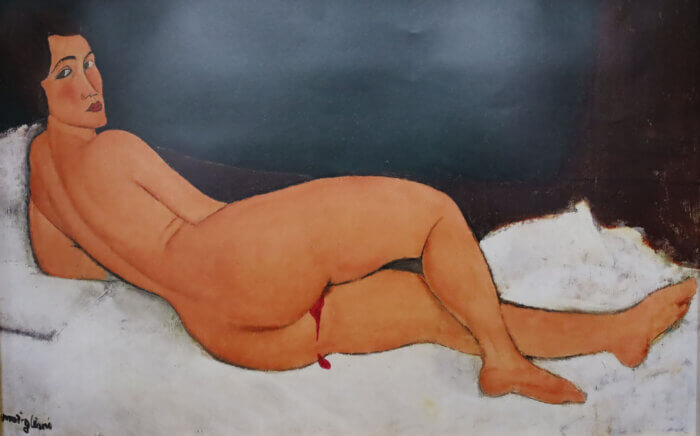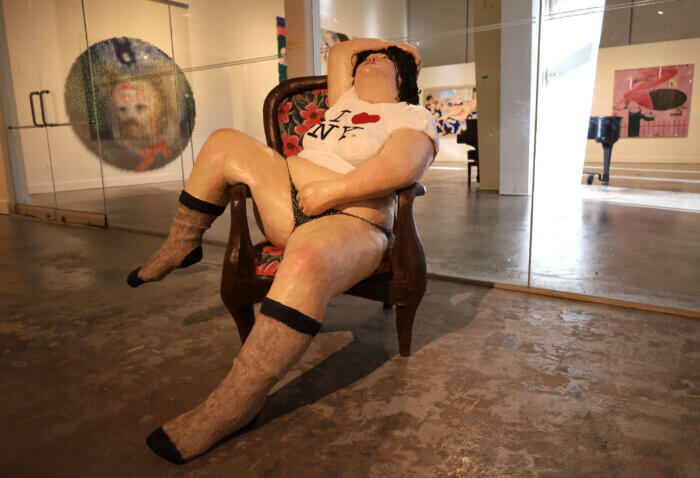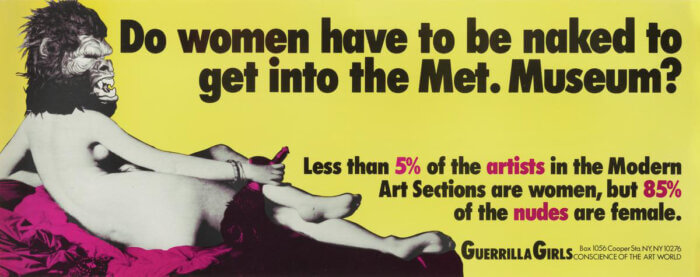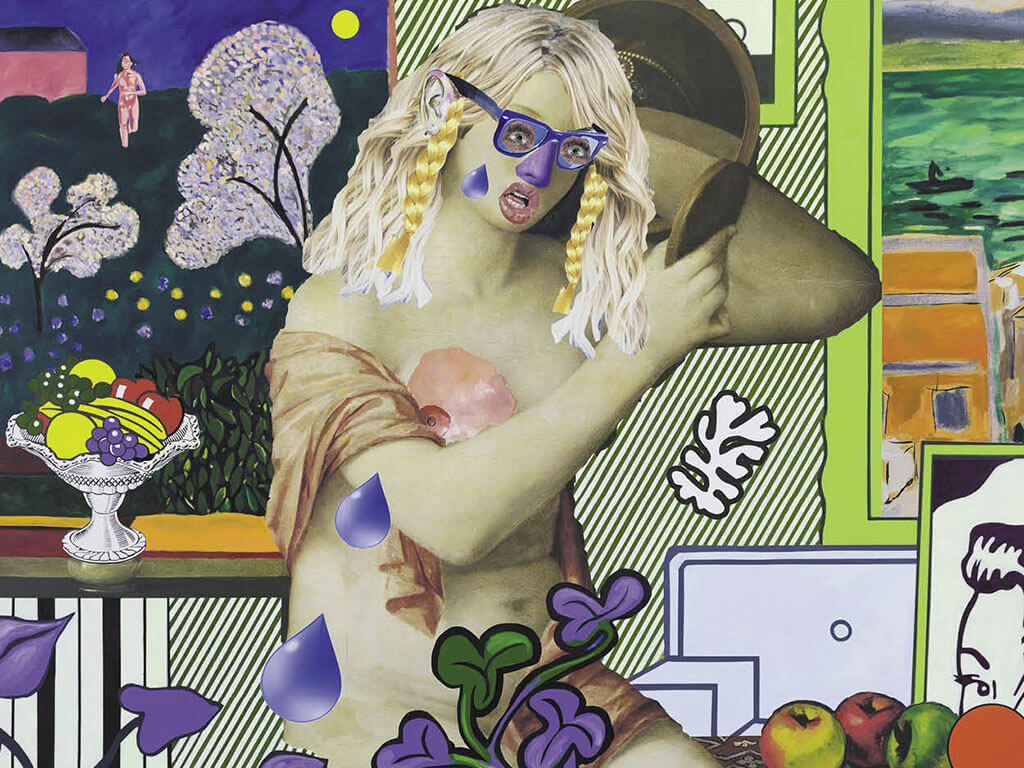As a response to the idealized portrayal of women in literature and the arts as submissive and naive sexual objects solely for the heterosexual male viewer, film theorist Laura Mulvey coined the term “the male gaze” in 1973. By placing the agency and focus into the hands of female artists, the Lehman College Art Gallery is challenging that patriarchal narrative with their latest exhibit, “Framing the Female Gaze: Women Artists and the New Historicism.”
Upon entry to the gallery, one finds themselves in the rotunda with its walls painted a sanguine burgundy and covered in dozens of vintage-looking picture frames with copies of historical paintings that feature the idealized woman. Sandro Boticelli’s “Birth of Venus” (1480s); Jean Auguste Dominique Ingres’ “Grand Odalisque” (1814); Amedeo Mogdiliani’s “Nude” (1917) and others boast their sexuality at the viewer. Except there’s one slight alteration – a trickle of menstrual blood pours down the leg or stains the sheets of each work.
Lizzy Alejandro’s intallation, “Herstory” (2023), replicates the French art salons of the 1600s-1700s, but instead of offering dozens of nude women for the male viewer to gawk at, Alejandro takes these canonized works of art and humanizes its subjects with the appearance of menstruation — done with a few squiggles from a red Sharpie marker. A direct affront to the idealized woman and an interruption to “the male gaze” as well as the several cultures and religions that still stigmatize menstruation.
“With this series it’s a celebration of the female body,” said Alejandro who graduated from Lehman College with her master’s in art in 2019 with her thesis, “Menstruation and Period Poverty.”

In “Framing the Female Gaze: Women Artists and the New Historicism,” 60 works of multimedia art by 45 contemporary women artists reflects on historically revered works and interprets them from their own perspectives while focusing on issues of sexuality, self-image and voyeurism.
Shona McAndrew’s “Norah” (2016-17), influenced by Rodin’s “Iris Messenger of Gods” (1890) – a small bronze of a headless nude woman grabbing her foot and exposing her vulva — is equally as voyeuristic. “Norah” is a life-sized paper mâche of a woman lounging in a chair one might find at their grandmother’s home. She wears an “I heart NY” t-shirt with gray and black crew socks and a pair of polka-dotted bikini underwear. She has one arm exhaustedly draped over her head while the other one grabs a fistful of pubic hair.
One cannot help but get a closer look and thereby become the ogler.
“Some of these 19th century, French, male artists — love them, hate them, however you feel about them — they continue to exert an influence,” said Bartholomew Bland, the gallery’s director and one of the curators of the exhibit along with Patricia Cazorla, Georgette Gouveia and Deborah Yasinsky.

The works challenge not only “the male gaze,” but also reclaim it and transform it. Much of the exhibit is in-your-face and takes up space with its multi-dimensionality, like the sensory treat that is Devorah Sperber’s “After Renoir” (2006). The large work recreates Renoir’s “A Girl with a Watering Can” (1876) out of spools of thread and upside-down. A crystal ball positioned a few feet from the spools reflects the image right-side up for the viewer.
Allison Zuckerman’s “Woman at Her Toilette” (2017) hangs high on the wall and looms over visitors at more than 12 feet high. Painted in Pop Art style, a mostly nude giantess sits in her boudoir looking at herself in a handheld mirror with mouth agape. She is surrounded by allusions to famous artists and their works like Paul Cezanne’s “Still Life with Fruit Dish”” (1879-80) and Roy Lichtenstein’s take on Cezanne’s work, “Still Life with Crystal Bowl” (1972).
“A lot of art was made for men by men: the female figures have been idealized, and they’re submissive and anonymous,” said Zuckerman about abstracting the historical perception of women in art.
The famous Guerilla Girls poster, “Do Women Have to Be Naked to Get Into The Met Museum?” (1989) is also on view. A rectangular yellow banner with a “Grand Odalisque” body wearing a gorilla mask and those titular words emblazoned across it provides an overarching theme to the exhibit and the male gaze in general – do women have to be naked?

“Framing the Female Gaze: Women Artists and the New Historicism” provokes conversation of social and personal politics, especially in an environment where the landmark court case, Roe v. Wade, had been recently overturned and left the future of many women in the hands of male lawmakers and judges. Reclaiming the female gaze is not just about a power dynamic, it is about having ownership over one’s body as a woman and the conversations that surround it.
The exhibit will run at the Lehman College Art Gallery through Jan. 20, 2024 and a related exhibit will run at the Hall of Fame Art Gallery at Bronx Community College through Dec. 12.
Reach ET Rodriguez at etrodriguez317@gmail.com. For more coverage, follow us on Twitter, Facebook and Instagram @bronxtimes






















